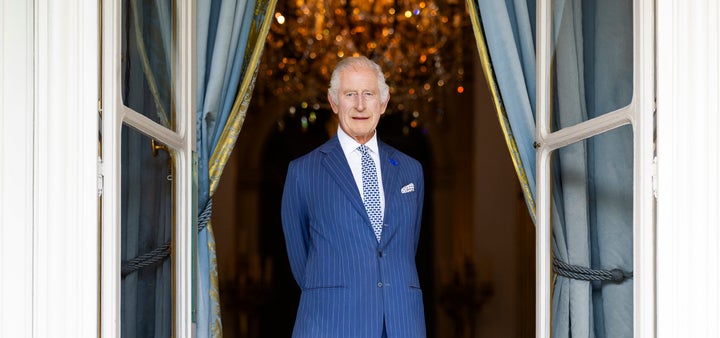
King Charles broke with royal tradition when Buckingham Palace announced on Monday the monarch had been diagnosed with a form of cancer.
While the health of the royals has traditionally been shrouded in secrecy, the palace’s disclosure follows public statements about his recent treatment for a benign prostate condition.
With the 75-year-old King becoming one of hundreds of thousands of Brits diagnosed with cancer every year, part of the thinking is likely to be how high-profile cancer cases can lead to a spike in public interest.
After Angelina Jolie announced in 2013 that she had a preventative double mastectomy to reduce her risk of breast cancer, NHS referrals for genetic counselling and tests for breast cancer risk more than doubled in the UK.
In 2009, reality star Jade Goody died from cervical cancer at the age of 27, and her public battle with the illness led prompted the so-called “Jade Goody effect” – a 12% spike in women getting NHS smear tests.
While questions remain about how long-lasting these effects can be, and whether the mystery around precisely what form of cancer Charles is being treated for undermines awareness-raising efforts, the wall-to-wall global coverage of his illness is likely to keep the focus on cancer for some time.
What do we know of the King’s diagnosis?
The Palace didn’t disclose what form of cancer the King has, but said it’s not related to his recent prostate treatment.
It said “a separate issue of concern was noted” during Charles’ treatment for an enlarged prostate last month, when he spent three nights in a London hospital.
“Diagnostic tests have identified a form of cancer,” it said in a statement.
The Palace has confirmed that Charles started “a schedule of regular treatments”, which while unspecified could involve chemotherapy, radiotherapy or targeted cancer drugs.
How many people are diagnosed with cancer?
According to Macmillan Cancer Support around 393,000 people in the UK are diagnosed with cancer each year.
Figures from Cancer Research UK (CRUK) show that there are an average of 29,378 cases of cancer diagnosed among men aged 75-79 each year in the UK annually.
The most common cancers among men aged over 75 in the UK are prostate, lung, bowel and bladder cancer followed by melanoma skin cancer, according to the charity.
Half of people diagnosed with cancer in the UK survive for at least 10 years after their diagnosis, according to CRUK figures, but survival rates vary in each case.
Each year around 167,000 people die from cancer in the UK. In 2021 one in four deaths were caused by cancer, the charity said on its website.
Will his diagnosis raise awareness?
While it’s too early to tell whether there will be a “King Charles effect”, the sharing of his diagnosis of an enlarged prostate led to a significant increase in searches for the condition on the NHS website.
On the day after the announcement there were 16,410 visits to the NHS website’s prostate enlargement page compared with 1,414 visits the previous day.
Pat Price, founder of the Catch Up With Cancer campaign, said millions shared the “collective concern” for the King’s health.
“The King’s openness about his battle with cancer is a powerful reminder that one in two of us may face cancer at some point in our lives,” Price said.
Why did the royals keep health issues secret?
For centuries Britain’s royal family remained tight-lipped about health matters.
When monarchs had real power, news of illness was withheld for fear it might weaken their authority. The habit of secrecy lingered after royals became constitutional figureheads.
The public wasn’t told that Charles’ grandfather, King George VI, had lung cancer before his death in February 1952 at the age of 56, and some historians have claimed that the king himself wasn’t told he was terminally ill.
In the final years of Queen Elizabeth’s life, the public was told only that the queen was suffering from “mobility issues”. The cause of her death was listed on the death certificate simply as “old age”.
News of the king’s diagnosis comes as his daughter-in-law Kate, Princess of Wales, recovers from abdominal surgery that saw her hospitalised for about two weeks.